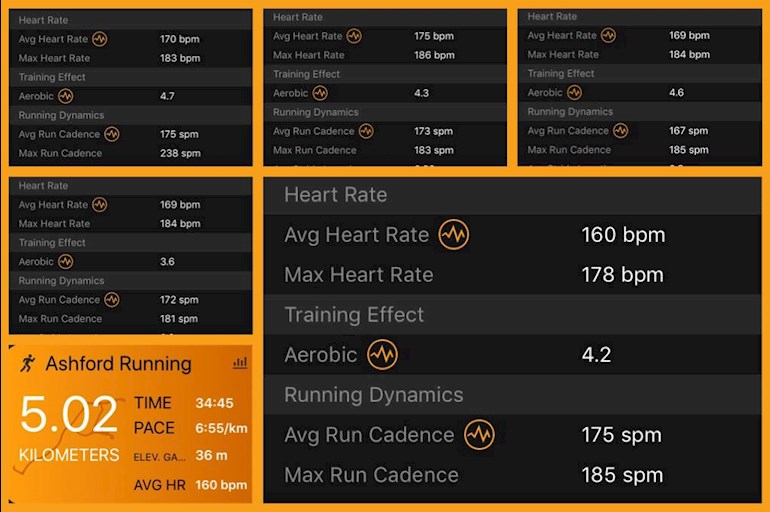Today was the day to test out the CooSpo Heart Rate Monitor on a chest strap. I have been suspicious of the accuracy of the Garmin wrist sensor whilst running since my failed attempt to do a ‘heart rate zone’ run. My heart appears to beat too furiously to even achieve a brisk walking pace in Zone 1, let alone jog in Zone 2. I basically ended up walking 10k with the odd sort of doggy trot here and there and still averaged 136bpm.
I then tried a run where I could only breathe through my nose, in an attempt to keep the effort, pace - and heart rate - low. This quite pleasant run resulted in a 170bpm average. Back to the drawing board.
Then I noticed that my cadence and my heart rate were remarkably - and suspiciously - similar. On the nose-breathing run my average HR was 170bpm, my average cadence was 175spm. On the 10k walk/trot my HR was 136, cadence 139. And so on, back through the last few months. The biggest difference in average heart rate and average cadence was 6 beats/steps, and usually, there was a difference of only 2 or 3 beats/steps. There was a similar pattern in maximum heart rate and cadence figures.
So I unpacked the CooSpo, wet the sensors and strapped it round my torso. It beeped to let me know it had found my heart, then when I selected the Run activity on the Garmin it connected to the CooSpo. Seamless. And off we went, gadget girl and her gadgets. The phrase ‘all the gear and no idea’ was drifting around somewhere, but hey, whatever gets us off the couch, right?!
I had ‘Fantastic Mr Fox’ on Audible to listen to and so the 5k passed with Boggis, Bunce and Bean and their shotguns and mechanical shovels. It felt tougher than my last run and I couldn’t maintain nose breathing the whole time, but plodded on nonetheless.
Then it was time for the big reveal. In terms of effort, I felt I worked harder today than during my previous run. So it was interesting to see an average of 10bpm less, at 160bpm, lower than I have seen for a long long time. My cadence? 175spm, a difference of 15 beats/steps. That’s pretty significant given the previous stats and indicates that the Garmin wrist sensor is indeed locking into my cadence, rather than my heart rate. Which doesn’t matter a bit unless you want to try training in heart rate zones, when it might mean the difference between a slow walk and a jog.
None of this changes the fact that my aerobic fitness could do with a lot of improvement! But perhaps my heart isn’t about to explode on a slow run.
Perhaps one day I’ll dump all the tech and just enjoy running... but not just yet 😉
Have a good week, peeps!

